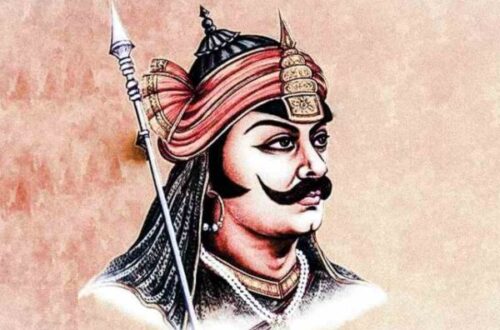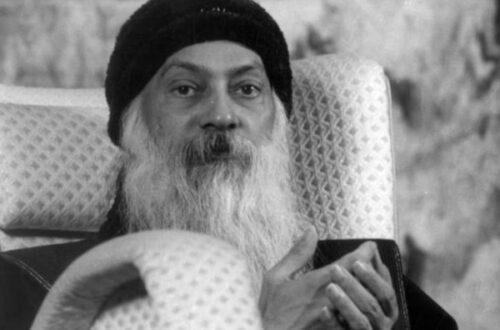
Kalpana Chawla: The Trailblazer Who Reached for the Stars
Kalpana Chawla’s name shines brightly in the world of space exploration. As the first woman of Indian origin to go to space, she has become a beacon of inspiration for millions, particularly young girls and aspiring scientists across the globe. Her journey from a small town in India to NASA’s Space Shuttle program is nothing short of remarkable. Kalpana’s story symbolizes dreams, perseverance, and the relentless pursuit of excellence.
This post takes you through the inspiring life of Kalpana Chawla, her career in space exploration, and the legacy she left behind.
Who Was Kalpana Chawla?
Kalpana Chawla was an astronaut, aerospace engineer, and an inspiration to millions worldwide. Born in Haryana, India, on March 17, 1962, Kalpana’s journey into space was driven by her immense love for flying and her deep passion for science. She pursued higher studies in aerospace engineering and eventually became a part of NASA’s Space Shuttle program.
Kalpana’s life is an example of what is possible when hard work, determination, and unwavering focus meet a powerful vision. Her legacy lives on through her achievements, which paved the way for others to follow in her footsteps.
Kalpana Chawla’s Early Life and Education
Kalpana Chawla was born into a middle-class family in Karnal, a city in Haryana, India. From a young age, she had a deep interest in aviation and dreams of flying. Despite societal and familial expectations, Kalpana was determined to pursue her passion for aerospace engineering.
Table: Early Life and Education of Kalpana Chawla
| Aspect | Details |
|---|---|
| Birthplace | Karnal, Haryana, India |
| Date of Birth | March 17, 1962 |
| Family | Father – Banarasi Lal Chawla, Mother – Satyawati Chawla, two siblings |
| Initial Education | Attended Tagore School in Karnal, where she excelled academically |
| Undergraduate Degree | Bachelor of Engineering (Aeronautical Engineering) from Punjab Engineering College, Chandigarh |
| Postgraduate Degree | Master of Science (Aerospace Engineering) from the University of Texas at Arlington |
| Ph.D. | Doctor of Philosophy (Aerospace Engineering) from the University of Colorado at Boulder |
Kalpana’s journey into aerospace was shaped by her family’s support and her own ambition. She loved mathematics and science, excelling in her studies from an early age. After completing her undergraduate degree in Aeronautical Engineering from Punjab Engineering College, Kalpana moved to the United States for further studies. Her academic achievements continued to grow as she earned a master’s degree and later a Ph.D. in aerospace engineering.
Kalpana Chawla’s Career in NASA
Kalpana’s dream of flying became a reality when she joined NASA in 1988 as a research scientist. Her exceptional skills and commitment to space exploration soon led her to become a part of the NASA Space Shuttle program. In 1997, she made history as the first woman of Indian descent to travel to space aboard Space Shuttle Columbia.
Milestones in Kalpana Chawla’s Career
| Year | Milestone |
|---|---|
| 1988 | Joined NASA as a Research Scientist and Aerospace Engineer. |
| 1997 | First spaceflight aboard Space Shuttle Columbia (STS-87), becoming the first woman of Indian origin in space. |
| 2000 | Second spaceflight aboard Space Shuttle Columbia (STS-107) as a Mission Specialist. |
| 2003 | Tragically died during the STS-107 mission on February 1, 2003, when Space Shuttle Columbia disintegrated upon re-entry. |
Kalpana’s first mission in 1997 was a huge accomplishment, not just for her but also for the nation. As part of STS-87, Kalpana Chawla conducted experiments on the effects of weightlessness and conducted experiments in the fields of space technology, physics, and material science.
Her second mission, STS-107, was equally groundbreaking. She and her fellow astronauts spent 16 days aboard the Columbia Space Shuttle, conducting over 80 experiments in various scientific fields. Unfortunately, tragedy struck when the shuttle disintegrated upon re-entry into Earth’s atmosphere, leading to the untimely loss of Kalpana Chawla and her colleagues.
Kalpana Chawla’s Legacy
Kalpana Chawla’s legacy is far-reaching. Her journey symbolizes the triumph of human potential and determination. Women in science, particularly those of Indian origin, found a powerful role model in Kalpana. Even though her life was tragically cut short, her achievements continue to inspire new generations of students, especially girls, to pursue their dreams in science, technology, and space exploration.
Kalpana Chawla’s Impact on Science and Society
| Aspect | Details |
|---|---|
| Space Exploration | Kalpana Chawla was a pioneering figure in space exploration, helping break barriers for women and people of Indian origin in the field. |
| STEM Inspiration | Her life continues to motivate young girls and boys to pursue careers in STEM (Science, Technology, Engineering, Mathematics). |
| Women Empowerment | Kalpana’s success story is a beacon for gender equality and empowerment, especially in male-dominated fields like aerospace. |
| Space Research | Her contributions to NASA’s Space Shuttle Program and scientific experiments in space paved the way for future research in space science. |
| Public Memorials | Several memorials, institutions, and awards are named after her, including the Kalpana Chawla Memorial Planetarium in Haryana. |
Kalpana’s memory is honored through various memorials, schools, and scholarships named in her honor. Her life and work are celebrated not just in India, but also worldwide, by organizations aiming to promote space exploration, science education, and women in technology.
Kalpana Chawla’s Impact on Education and Women in Science
Kalpana Chawla’s journey has ignited an ongoing conversation about the importance of STEM education for women. She has inspired millions of children, especially young girls, to explore careers in science, technology, engineering, and mathematics.
Kalpana Chawla’s Role in Promoting STEM Education
| Initiative/Impact | Details |
|---|---|
| Space Missions | Kalpana’s NASA missions encouraged young people to see space exploration as an achievable dream. |
| Educational Programs | Institutions and universities across the world have created scholarships and programs in her name, especially for young women pursuing careers in aerospace. |
| Women in STEM | Kalpana became an iconic figure for gender equality in STEM, proving that women can excel in space exploration and engineering. |
| Kalpana Chawla Memorial | The Kalpana Chawla Memorial Award and other similar accolades continue to inspire students worldwide. |
| Books and Documentaries | Kalpana’s life story is featured in books and documentaries, motivating young people to pursue dreams in aerospace and science. |
Kalpana Chawla’s Personal Life
While Kalpana Chawla was widely recognized for her contributions to space science, her personal life was marked by humility, resilience, and a deep sense of responsibility towards her family, friends, and colleagues. Kalpana was known to be very determined and focused on her goals, while also being compassionate and understanding.
Personal Life of Kalpana Chawla
| Aspect | Details |
|---|---|
| Spouse | Jean-Pierre Harrison, an aerospace engineer from France, married in 1983. |
| Personality Traits | Determined, Focused, Supportive, and Caring towards her family, colleagues, and mentees. |
| Passions | Kalpana had a deep love for flying, space exploration, and was also passionate about fostering young talent in aerospace. |
Kalpana Chawla’s Cause of Death
Kalpana Chawla tragically passed away on February 1, 2003, when the Space Shuttle Columbia disintegrated upon re-entry into Earth’s atmosphere. This occurred during her second space mission, STS-107.
The mission was meant to be a 16-day scientific research flight. Kalpana and the other six astronauts aboard the shuttle were conducting experiments in various fields, including materials science, fluid physics, and biotechnology.
However, during re-entry into Earth’s atmosphere, the Columbia shuttle broke apart over Texas due to the damage it sustained during launch. A piece of foam insulation from the external fuel tank struck the left wing of the shuttle, causing a breach in the thermal protection system. This breach allowed hot atmospheric gases to enter the wing during re-entry, ultimately leading to the shuttle’s destruction.
The tragedy claimed the lives of all seven crew members aboard the Space Shuttle Columbia, and Kalpana Chawla was among them. The other astronauts on this mission were:
- Rick D. Husband (Commander)
- William C. McCool (Pilot)
- Michael P. Anderson (Payload Commander)
- Ilan Ramon (First Israeli astronaut)
- Laurel B. Clark (Mission Specialist)
- David M. Brown (Mission Specialist)
The loss of Kalpana Chawla, along with her fellow astronauts, was a devastating blow to the global community, particularly to those who had been inspired by her pioneering efforts in space exploration. Kalpana’s contribution to space research and her legacy as a trailblazer for women in science and technology continue to live on.
Kalpana Chawla’s Siblings
Kalpana Chawla was the youngest of four siblings in her family. Although much of her personal life remained private, it is known that her family played a significant role in her journey to becoming an astronaut. Kalpana was very close to her parents and her siblings, who supported her aspirations despite the challenges she faced in pursuing her dreams in a field that was not traditionally open to women at that time.
Her father, Banarasi Lal Chawla, was a bania (businessman), and her mother, Satyawati Chawla, was a teacher. Kalpana’s parents were extremely supportive of her academic and professional aspirations, and their encouragement helped her succeed in her educational pursuits and ultimately reach NASA.
Unfortunately, there is limited publicly available information about her siblings. However, it is evident that her family was an integral part of her life and success.
Kalpana Chawla’s Children
Kalpana Chawla did not have children. She was married to Jean-Pierre Harrison, a fellow aerospace engineer from France, in 1983. Their marriage was based on a shared love for science and technology, and they supported each other’s careers. However, they did not have children. Kalpana was deeply committed to her work at NASA and the scientific community, often focusing her efforts on space exploration and her role as a mission specialist.
Despite the absence of children, Kalpana’s legacy continues through the countless lives she touched and inspired, particularly those who saw her as a role model in science, aerospace engineering, and women’s empowerment.
Kalpana Chawla: A Role Model for Future Generations
Kalpana Chawla’s life story is more than just that of an astronaut. It is a narrative of overcoming barriers, breaking stereotypes, and contributing to the world through knowledge, passion, and determination. Her legacy continues to live on, not just in the hearts of those who remember her, but in the accomplishments of all those she inspired.
Conclusion: Kalpana Chawla’s Enduring Influence
Kalpana Chawla’s journey exemplifies how one person’s dedication and vision can change the world. From her humble beginnings in Karnal to her historic spaceflights, Kalpana demonstrated the true power of dreams. Today, her life continues to encourage young minds everywhere to look beyond the sky, work towards their goals, and never give up on their dreams—just as she never did.
Her legacy will continue to inspire the scientists, engineers, and astronauts of tomorrow, urging them to reach for the stars.




